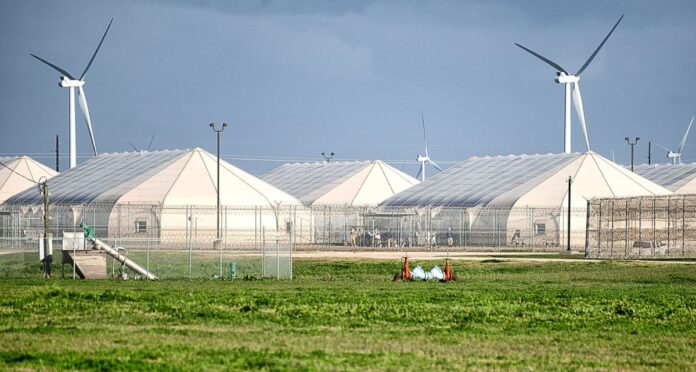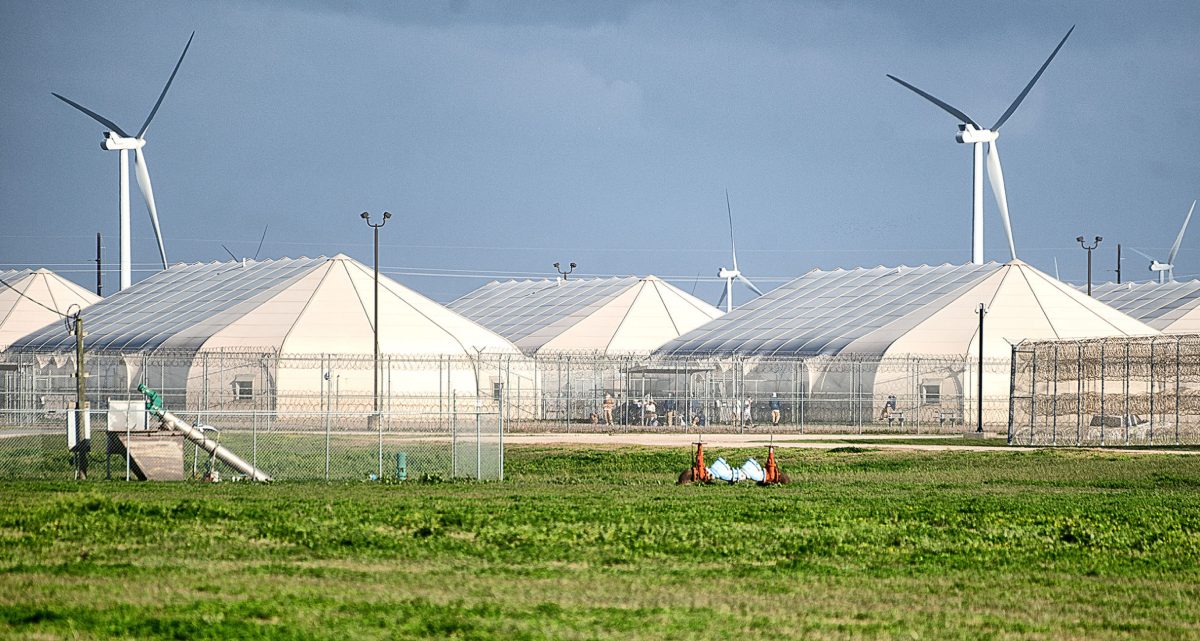RAYMONDVILLE — The sale of the former “tent-city” prison is expected to bring as much as $2 million in annual property tax revenue while creating about 250 jobs in this farming area.
Last night, Willacy County commissioners entered into an agreement to sell the 53-acre facility to Management & Training Corp., which likely will turn it into a detention center to hold undocumented immigrants.
The sale is expected to close in about three days.
“Ultimately, the decision is what’s best for Willacy County,” County Judge Aurelio Guerra told reporters after a meeting.
Commissioners sold the property after bond holders demanded payment of its $68 million debt.
But Guerra declined to disclose the sale price until the deal is closed.
“The bond holders will be paid off,” Guerra said. “For the past two years we’ve had that over our heads. It’s a big relief.”
The sale will put the property on the tax roles, generating $1.5 million to $2 million in annual tax revenue to the county’s tax entities, including the city of Raymondville and the Raymondville school district, Guerra said.
Guerra said the county will reap $350,000 to $450,000 in annual property tax revenue.
MTC plans to create about 275 jobs, Guerra said.
As part of the deal, he said, the agreement will pay the county for each inmate held in the facility. But he declined to disclose details until the deal closes.
President Trump’s push to deport undocumented immigrants convicted of crimes helped lead to the deal.
MTC, the facility’s operator since it opened in 2006, is searching for a customer for whom to hold inmates, said Sergio Molina, the company’s vice president for business development and administration.
“It’s our expectation that will happen very quickly,” Molina told reporters.
Molina said U.S. Immigration and Customs Enforcement is a prospective customer.
“Because of the need for ICE beds, that’s one of the (prospective) customers,” Molina said.
Molina said other prospective customers include the Federal Bureau of Prisons and the state of Texas.
An ICE contract would pay wages similar to those of the former Willacy County Correctional Center, which held inmates for the Bureau of Prisons, Molina said.
“If we get another federal contract, it would be very similar to what was there before,” Molina said, adding the prison paid some of the area’s best wages.
As part of the agreement, the county has apparently agreed to dismiss a lawsuit against MTC.
“If all the documents are signed, that will be part of the agreement,” Guerra said.
County-contracted attorney Ricardo Morado said the sale is expected to close in about three days.
Last December, the county filed a lawsuit against MTC, arguing its “abysmal mismanagement” led to the inmate uprising that destroyed much of the prison largely made up of tent-like domes in February 2015, plunging the county into financial crisis.
The lawsuit argued overcrowding and plumbing problems created “deplorable” inmate living conditions, raising tensions and leading inmates to destroy much of the 3,000-bed prison.
MTC denied the allegations, arguing it conducted “frequent comprehensive audits to make sure the facility was safe and clean and that it met all federal BOP standards.”
MTC, a Centerville, Utah-based company, was involved in the original deal that led to the facility’s development in 2006.
In 2006, the county sold $60 million in bonds to build a 2,000-bed detention center made up of 10 tent-like domes to hold undocumented immigrants for ICE.
As part of an agreement, the government paid the county $78 a day to hold each inmate.
A year later, county commissioners sold $50 million in bonds to build a 1,000-bed concrete housing unit, expanding the detention center’s capacity to 3,000 beds.
Under ICE, the detention center fell far short of projected income, with the agency filling about half of its 3,000 beds.
In June 2011, ICE pulled out of the facility, leading to 120 employee layoffs.
A month later, the county issued $76 million in bonds to refinance the facility as part of a plan to convert it into a minimum-security prison to hold undocumented immigrants convicted of crimes for the Bureau of Prisons.
In February 2015, the closure of the 3,000-bed prison, which paid the county for every inmate it housed, led to 400 employee layoffs, slashing a third of the county’s $8.1 million general fund budget.






